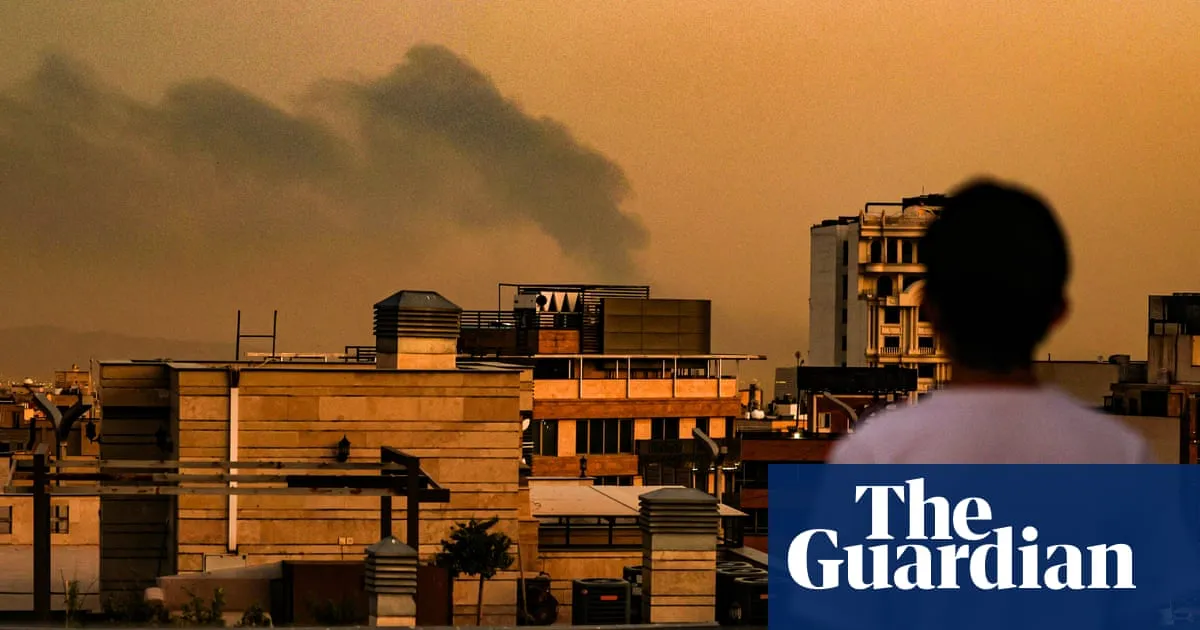
On Friday, Israel launched a surprise attack on multiple targets across Iran, initiating a conflict that has significantly escalated over the past three days. This military confrontation marks the largest escalation between these longstanding adversaries, with both sides exchanging threats of further devastation. Here’s a comprehensive round-up of the ongoing conflict.
During the initial strike, Israel targeted over 100 significant locations in Iran, which included critical nuclear facilities and missile sites. Among the casualties were high-ranking military officials such as Maj Gen Mohammad Bagheri, the chief of staff of Iran's armed forces, and Gen Hossein Salami, the commander of the Islamic Revolutionary Guard Corps (IRGC). Additionally, at least six Iranian nuclear scientists were reported killed in these attacks.
Satellite imagery has revealed extensive damage to key areas of the Natanz nuclear site, recognized as Iran’s primary facility for nuclear enrichment. While the damage was significant, the fuel enrichment plant itself appeared to remain intact. Furthermore, a nuclear research center located in Isfahan was also targeted during the strikes.
Israeli airstrikes persisted throughout the weekend and into Monday, as the Israel Defense Forces (IDF) focused on air defense systems surrounding Tehran. The military announced that they had successfully struck “more than 80” targets in the capital since Saturday, including the defense ministry headquarters and missile launch sites that were used to threaten Israel.
The Iranian oil ministry reported that two fuel depots in the Tehran region were also struck. In retaliation, Iran accused Israel of targeting civilian areas in Tehran, with the health ministry estimating that Israeli attacks have resulted in 224 fatalities since Friday.
In response to the Israeli airstrikes, Iran has launched several waves of missiles targeting Israel. Iranian authorities reported that since Friday, 14 individuals had lost their lives and approximately 390 had sustained injuries in Israel. A devastating strike late Saturday destroyed a three-story building in the town of Tamra, resulting in the deaths of four women. Another missile strike in Bat Yam, near Tel Aviv, claimed six lives and left at least 180 injured.
Amid the escalating conflict, Iran issued warnings to the United States, United Kingdom, and France, threatening military action against their bases and ships if they intervened in Iran's missile and drone retaliation. Reports indicated that American air defense systems, including a Navy destroyer, assisted Israel in intercepting incoming ballistic missiles during the initial strike.
The UK government has begun relocating jets and other military resources to the Middle East, with Prime Minister Keir Starmer not ruling out military support for Israel. Israeli Prime Minister Benjamin Netanyahu justified the attack by claiming it was a preemptive measure against a covert Iranian program to develop a nuclear bomb, alleging that Tehran had the capability to produce nine nuclear bombs.
The International Atomic Energy Agency (IAEA) recently ruled that Iran had violated its commitments under the nuclear non-proliferation treaty by failing to cooperate fully with inspections and for accumulating an estimated 400kg of highly enriched uranium. Despite this, Western intelligence assessments have generally maintained that Iran has not made a definitive decision to proceed with bomb construction.
In the wake of the attacks, Iran's supreme leader, Ayatollah Ali Khamenei, issued threats of “severe punishment” and accused Israel of deliberately targeting residential areas. The latest round of US-Iran nuclear negotiations, previously scheduled for Sunday, was canceled. Tehran has reportedly informed potential mediators, Qatar and Oman, that it is unwilling to negotiate a ceasefire while under Israeli assault.
Initially, US Secretary of State Marco Rubio declared that the US had not participated in Israel's attack, labeling it as “unilateral.” However, President Donald Trump later clarified that the US was aware of the planned attack. At the recent G7 conference in Canada, Trump claimed that he was working behind the scenes on a diplomatic solution, while reports surfaced that he had vetoed an Israeli proposal to eliminate Iran’s supreme leader.
This ongoing conflict represents a critical juncture in Middle Eastern geopolitics, with potential repercussions that could extend far beyond the borders of Iran and Israel.